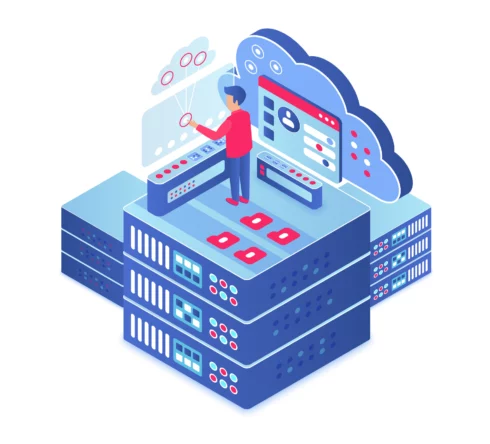
These days, virtually every company is using AI – and in most cases, they’re using it through off-the-shelf AI technologies, like Copilot, that offer the same capabilities to every customer.
This begs the question: How can a business actually stand out in the age of AI? Rather than just adopting AI as a way of keeping up with competitors, how can companies leverage AI to gain an actual edge?
The answer is simple, but easily overlooked: Proprietary data. Although much of the conversation surrounding AI transformation focuses on buzzworthy topics like which vendor has the best models or how best to manage evolving AI compliance needs, what arguably matters more than anything else in AI success is the ability to leverage your company’s proprietary data to maximum effect.
Here’s why, along with tips on how to make the most of proprietary data as part of a modern AI strategy.
The role of proprietary data in AI success
To understand why proprietary data is the key differentiator for AI transformation, you must first understand how cutting-edge generative and agentic AI technology works.
It’s all powered by large language models, or LLMs. The thing about these generic LLMs, however, is that they’re trained on generic data. They excel at working with publicly available information. But when it comes to understanding the unique needs, priorities and operations of your company, they fall short, because they weren’t trained on your company’s internal data.
This is where proprietary data comes in. Using techniques like fine-tuning and retrieval augmented generation (RAG), it’s possible to provide a pretrained LLM with additional data – including proprietary data unique to a specific organization. Doing so equips the LLM to generate content or guide agent-based decision-making in ways that would be impossible for a model that lacks insight into the internal workings of an organization.
Hence why proprietary data plays such a critical role in AI success: It’s what differentiates companies that use AI for basic and generic tasks (like responding to customer queries based on publicly available information) from those that leverage AI for complex, bespoke needs (such as troubleshooting a unique customer problem by drawing on internal product documentation).
Unlocking access to proprietary data for AI
Now, connecting major AI platforms to proprietary data sources is quite easy. For instance, if your company uses Microsoft Copilot, you can configure private data sources with just a few clicks.
But unless the proprietary data you make available to an AI model is properly managed and governed, you’re unlikely to enjoy much success in supporting advanced AI use cases. To be effective, proprietary data must meet the following conditions:
- High quality: The data needs to be free of errors, redundancies and other quality problems, which could restrict the LLM’s ability to interpret it effectively.
- Available: The data must be continuously available so that the AI service can access it whenever needed.
- Secure: The data must be secure in the sense that you know which sensitive information it contains and can confirm that it’s acceptable to expose that information to a third-party AI service.
Failure to meet these requirements is where organizations tend to fall short when it comes to leveraging proprietary data to bolster the effectiveness of AI tools. Too often, businesses simply point their AI platforms to SharePoint sites, documentation databases or other data resources without having effective data management and governance procedures in place for the information. As a result, the custom data sources add little value.
Building AI-ready data platforms
To avoid this pitfall, businesses must invest in AI-ready data platforms. In other words, they need to deploy the tools, processes and data architectures necessary to manage all of their data effectively.
An AI-ready data platform is capable of taking all of the proprietary data owned by an organization and doing the following:
- Structured and unstructured data processing: No matter the type or form data exists in – whether it’s rows in a database, a Word document on a file system or anything else – the platform must be able to manage it.
- Data governance: An AI-ready data platform can enforce effective data quality, security and privacy controls over data exposed to AI services.
- Observability: The data platform should empower the organization to understand how its proprietary data is used, including by third-party AI services.
- Change management: As data and AI models evolve, the AI-ready data platform must evolve with them so that AI services are always up-to-date with the latest internal business insights.
These capabilities are the only way to ensure that proprietary data will actually enhance the performance of AI tools. When you build a data platform that unlocks the value of proprietary information in this way, you open the door to a host of new AI-driven use cases that make your business not just another AI adopter, but an actual standout in the race for AI success.






